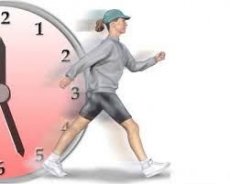Proper nutrition and physical activity will help reduce the risk of stroke
Last reviewed: 23.04.2024

All iLive content is medically reviewed or fact checked to ensure as much factual accuracy as possible.
We have strict sourcing guidelines and only link to reputable media sites, academic research institutions and, whenever possible, medically peer reviewed studies. Note that the numbers in parentheses ([1], [2], etc.) are clickable links to these studies.
If you feel that any of our content is inaccurate, out-of-date, or otherwise questionable, please select it and press Ctrl + Enter.

At the Karolinsky University, more than 30,000 women were surveyed, whose age was around 60 years. Each of the participants had to fill out a questionnaire, in which there were 350 questions about a healthy lifestyle and nutrition. After completing the questionnaires, the specialists conducted a long-term follow-up (10 years) for each of the survey participants.
Specialists gave women five tips for a healthy lifestyle - moderate drinking, giving up tobacco, proper nutrition, physical activity and normal weight.
Experts urged women to consume more vegetables and fruits, as well as dairy products with low fat content, walk more or ride a bicycle (at least 40 minutes a day) and practice gymnastics (about an hour a week).
Most of the women adhered to 2-3 recommendations of specialists, about 600 women observed everything to a single recommendation, and about a half thousand completely abandoned all recommendations. As a result, the researchers documented the development of stroke in 1,554 women.
In the course of the study, scientists determined that among those who adhered to all the tips and led a healthy lifestyle, the probability of developing a stroke was less by 54%, compared to those who did not comply with any prescriptions. In that group of women, in which special attention was paid to proper nutrition, cerebral circulation disorders were 13% less compared to those who did not adhere to the diet.
Another long study showed that after stopping menstruation, women need to eat more bananas.
For more than 10 years, experts have investigated more than 90,000 women. Specialists were interested in the amount of potassium consumed and the presence of stroke or death.
At the beginning of the experiment, women did not have a stroke in the history of the disease, the average amount of potassium consumed per day was 2.6 mg.
The daily dose of potassium should not be less than 3.5 mg (according to WHO recommendations), but only 16% of the participants used the required amount of this trace element.
Women who received large amounts of potassium from foodstuffs experienced a 12% decrease in stroke compared with those who consumed small amounts of this micronutrient.
Among those women with normal pressure who consumed the right amount of potassium, 27% less often had an ischemic stroke.
Among women who consumed a lot of potassium and suffered from high blood pressure, the lowest death rate was noted, but the amount of potassium consumed had no effect on the development of the stroke.
In conclusion, experts noted that the use of sufficient amounts of potassium is useful only until the moment when hypertension develops. At the same time, in women who received the necessary dose of potassium, the probability of premature death was reduced by 10%.
Potassium, in addition to bananas, is found in potatoes, sweet potatoes, white beans, but excessive potassium intake is not safe for the heart.


 [
[